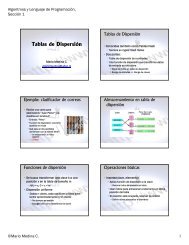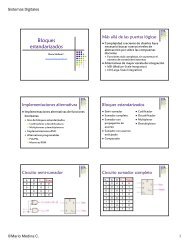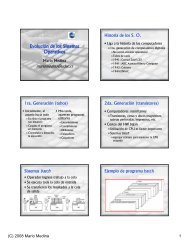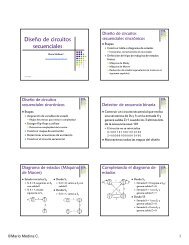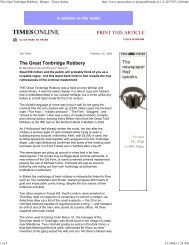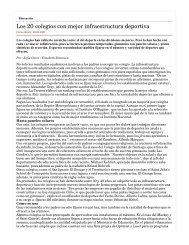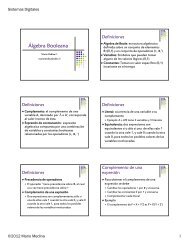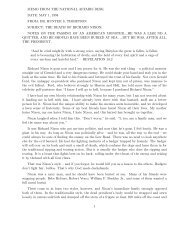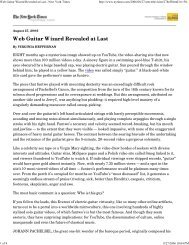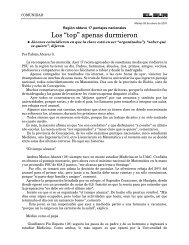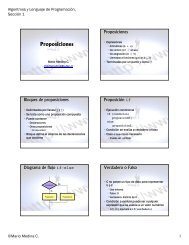A Symbolic Analysis of Relay and Switching Circuits
A Symbolic Analysis of Relay and Switching Circuits
A Symbolic Analysis of Relay and Switching Circuits
Create successful ePaper yourself
Turn your PDF publications into a flip-book with our unique Google optimized e-Paper software.
21<br />
Hinderance Function <strong>of</strong> a Non-Series-parallel Network,<br />
The methods <strong>of</strong> part II were not sufficient to h<strong>and</strong>le<br />
circuits which contained connections other than those<br />
<strong>of</strong> a series-parallel type. The bridge <strong>of</strong> Fig. 11, for<br />
examPle, is a non-aeries-parallel network.<br />
These networks<br />
v'ill lJe<br />
h<strong>and</strong>led by reducing to en equivalent<br />
series-parallel cireuit.<br />
'rhree methods have baen<br />
developed for finding the equivalent <strong>of</strong> a network<br />
such e s the bridge.<br />
R<br />
s<br />
b<br />
u<br />
v<br />
Fig.<br />
The<br />
first is the obVious method <strong>of</strong> aPPlying<br />
the transformstions until the network is <strong>of</strong> the<br />
series-parallel type an d then wr1 t1ng the h1nderan ce<br />
function bv inspection.<br />
This process is exactly<br />
the same a s<br />
is used in simplifying complex impedal1c e<br />
networks. To apply this to the circuit <strong>of</strong> Fig. 11,<br />
first eliminate the node c, by applying the star<br />
to mesh transformation to the star a-c, b-c, d-c.<br />
This ~i ves the network <strong>of</strong> Fig. 12.



